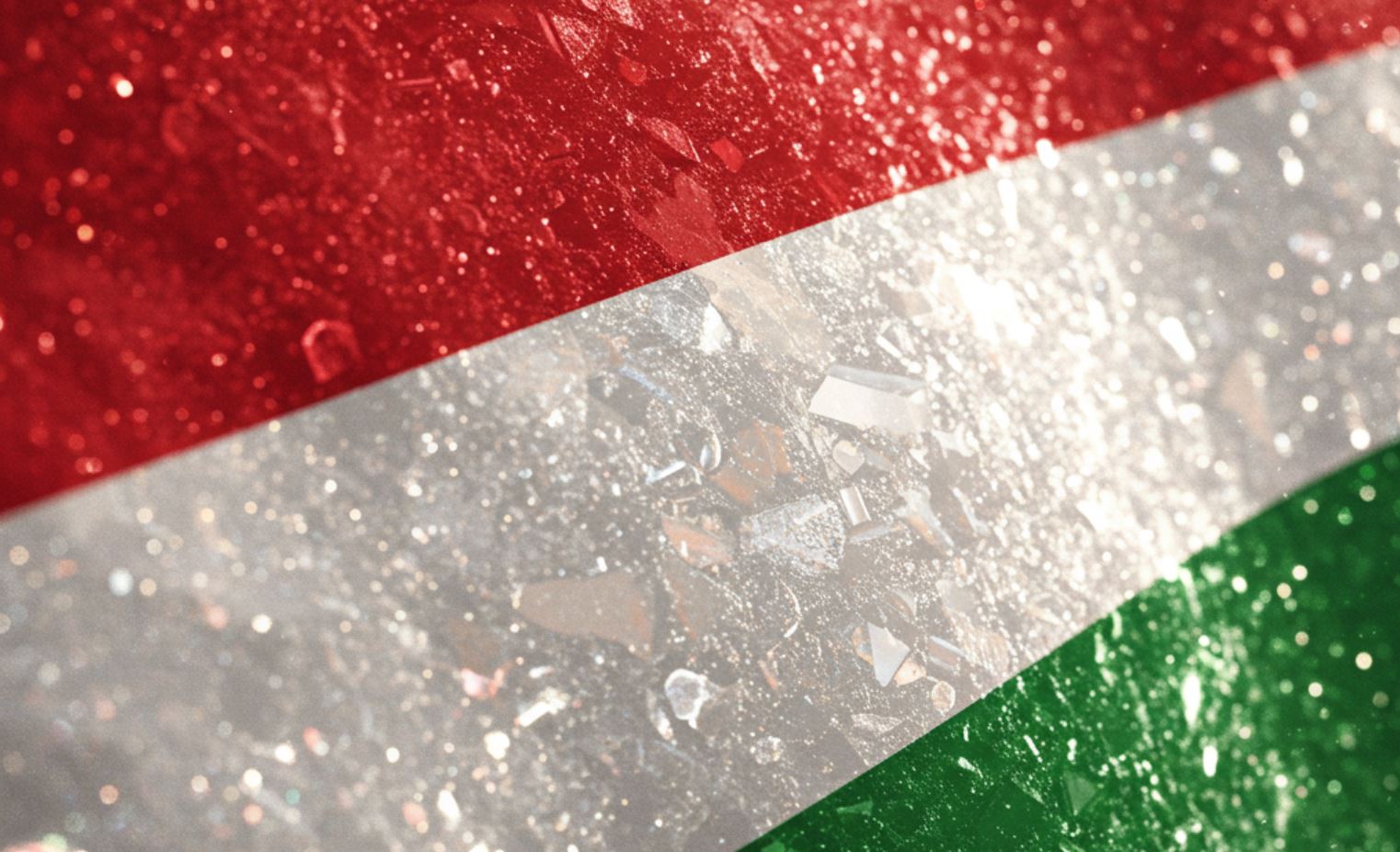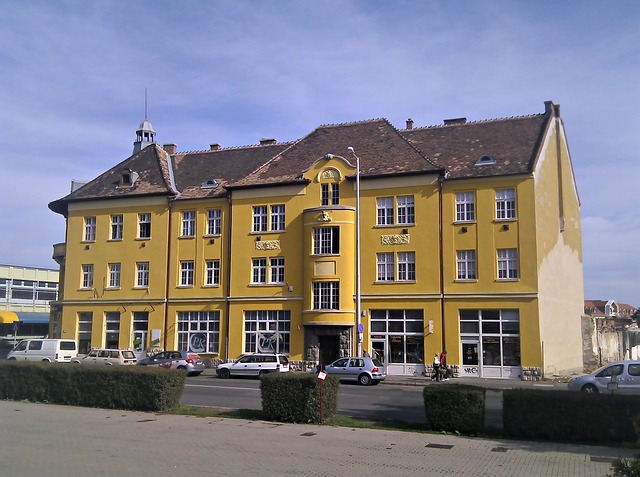
Hungary, a landlocked country nestled in the heart of Central Europe, is a nation brimming with a rich history, a unique and complex language, vibrant cultural traditions, and breathtaking landscapes. From its bustling capital, Budapest, often dubbed the „Pearl of the Danube,” to its rolling hills, thermal baths, and historic towns, Hungary offers a captivating experience for any visitor or curious mind. This article aims to provide a comprehensive overview of what kind of country Hungary is, delving into its multifaceted identity. 🇭🇺
A Glimpse into Hungary’s Storied Past 📜
Understanding Hungary requires a journey back through its more than a millennium-long history. The Magyar tribes, arriving from the Ural Mountains, conquered the Carpathian Basin in the late 9th century under the leadership of Árpád. This event, known as the Honfoglalás (land-taking), laid the foundation for the Hungarian state.
In the year 1000, King Stephen I (Szent István) received a crown from the Pope, formally establishing the Kingdom of Hungary and converting the nation to Christianity. This was a pivotal moment, aligning Hungary with Western Europe. Throughout the Middle Ages, Hungary grew into a significant and powerful kingdom, fending off various invasions and playing a crucial role in European politics. The reign of Matthias Corvinus in the 15th century is often considered a golden age, marked by cultural and artistic flourishing.
However, Hungary’s strategic location also made it a frequent battleground. The Ottoman occupation, beginning in the 16th century after the Battle of Mohács (1526), lasted for roughly 150 years and had a profound impact on the country’s development and demography. Large parts of the country were devastated, while Transylvania became a semi-independent principality, preserving Hungarian culture.
Following the expulsion of the Ottomans, Hungary came under Habsburg rule. While this brought a degree of stability and integration into a larger empire, it also meant a continuous struggle for national independence and self-determination. The 19th century was marked by a strong nationalist movement, culminating in the Revolution and War of Independence of 1848-49, led by figures like Lajos Kossuth. Though ultimately suppressed, this period was crucial in forging a modern Hungarian identity.
The Austro-Hungarian Compromise of 1867 created the dual monarchy of Austria-Hungary, granting Hungary significant autonomy. This era saw rapid economic development, industrialization, and the magnificent urban expansion of Budapest.
The 20th century brought further dramatic changes. The aftermath of World War I and the Treaty of Trianon (1920) resulted in Hungary losing over two-thirds of its territory and a significant portion of its Hungarian-speaking population to neighboring countries – a national trauma that continues to resonate. The interwar period was challenging, followed by Hungary’s involvement in World War II on the side of the Axis powers.
After the war, Hungary fell under Soviet influence and became a communist state. The 1956 Revolution and Freedom Fight was a courageous uprising against the Soviet-backed regime, brutally crushed but leaving a lasting legacy of resistance. Decades of „Goulash Communism,” a somewhat less oppressive form of communism, followed.
Finally, in 1989, with the fall of the Berlin Wall and the collapse of Soviet influence in Eastern Europe, Hungary transitioned peacefully to a democratic republic. It joined NATO in 1999 and the European Union in 2004, marking its reintegration into the Western political and economic sphere. This rich and often turbulent history has profoundly shaped the Hungarian psyche, fostering a strong sense of national pride, resilience, and a unique cultural identity.
The Lay of the Land: Geography and Climate 🏞️☀️
Hungary is predominantly a flat to rolling country, situated in the Carpathian Basin. The Great Hungarian Plain (Alföld) covers most of its eastern and southern regions, characterized by fertile agricultural land. To the west lies the Transdanubian region, which is more hilly and includes the Bakony Mountains and the foothills of the Alps in the far west (Alpokalja). The North Hungarian Mountains stretch across the northern part of the country, offering scenic landscapes, forests, and wine regions like Tokaj and Eger.
The Danube River (Duna) is a dominant geographical feature, flowing from north to south through the heart of the country and bisecting Budapest. The Tisza River, another major waterway, flows through the Great Hungarian Plain. Lake Balaton, Central Europe’s largest freshwater lake, is a beloved holiday destination often referred to as the „Hungarian Sea.” Hungary is also renowned for its thermal waters, with hundreds of thermal springs and spa towns scattered across the country, a legacy of its geological activity. ♨️
Hungary experiences a continental climate with four distinct seasons. Summers (June to August) are generally warm to hot and sunny, with average temperatures often reaching (), sometimes even higher during heatwaves. Winters (December to February) are cold, with temperatures frequently dropping below freezing and snowfall being common, especially in the higher regions. Spring (March to May) and autumn (September to November) offer mild and pleasant weather, often with beautiful sunny days, making them ideal times to visit. Rainfall is distributed throughout the year, with late spring and early summer often seeing more precipitation.
The Hungarian People and Their Unique Language 🗣️
Hungarians, or Magyars, are the main ethnic group. There are also minority populations, including Roma, Germans, Slovaks, Croats, and Serbs. Hungarians are often described as hospitable and friendly, though they can also be perceived as reserved or melancholic, a trait sometimes attributed to their tumultuous history. Family values tend to be strong.
Perhaps one of the most distinctive aspects of Hungary is its language. Hungarian (Magyar) is a Finno-Ugric language, meaning it is related to Finnish and Estonian, but it is entirely different from the Indo-European languages spoken in neighboring countries (like Slavic, Germanic, or Romance languages). This makes it notoriously challenging for outsiders to learn.
Key characteristics of the Hungarian language include:
- Agglutination: Suffixes are attached to words to indicate grammatical functions (e.g., tense, case, possession) rather than using prepositions or auxiliary verbs extensively. A single Hungarian word can often equate to an entire phrase in English.
- Vowel Harmony: Vowels are divided into front and back categories, and suffixes usually change to match the type of vowels in the root word.
- Flexible Word Order: While there is a neutral word order, elements can be moved around to emphasize different parts of the sentence.
- Rich Vocabulary: It has a unique vocabulary with relatively few direct cognates with major Western European languages, though it has borrowed words from Turkic, Slavic, German, and Latin over the centuries.
- Politeness Levels: Like many languages, Hungarian has formal and informal ways of addressing people, which are important to observe.
This linguistic uniqueness is a strong component of Hungarian national identity.
Culture and Traditions: A Rich Tapestry 🎭🎶
Hungarian culture is a vibrant blend of Eastern and Western influences, deeply rooted in its history and folk traditions.
- Folk Music and Dance: Traditional Hungarian folk music, characterized by its distinctive rhythms and melodies often played on instruments like the cimbalom (a hammered dulcimer) and violin, is a vital part of the cultural heritage. Folk dances, such as the energetic csárdás, are performed in colorful traditional costumes during festivals and celebrations. The Táncház (dance house) movement, which emerged in the 1970s, has played a crucial role in reviving and popularizing folk music and dance among younger generations.
- Classical Music: Hungary has produced world-renowned classical composers, including Franz Liszt (Liszt Ferenc), Béla Bartók, and Zoltán Kodály. Bartók and Kodály were also prominent ethnomusicologists who collected and incorporated folk melodies into their compositions. The Hungarian State Opera House in Budapest is a magnificent venue for opera and ballet performances.
- Literature: Hungarian literature boasts a rich tradition, though its linguistic isolation means many great works are less known internationally than they deserve. Prominent writers include Sándor Petőfi (a key figure in the 1848 Revolution), Endre Ady, Attila József, Sándor Márai, and Nobel laureate Imre Kertész. Poetry holds a particularly special place in Hungarian culture.
- Art and Architecture: Hungarian architecture showcases a variety of styles, from Roman ruins and medieval castles to Baroque churches, Neoclassical public buildings, and striking examples of Art Nouveau (Szecesszió in Hungarian), particularly in Budapest and Szeged. Famous Hungarian painters include Mihály Munkácsy and Tivadar Csontváry Kosztka.
- Festivals and Celebrations: Hungarians celebrate numerous traditional festivals and national holidays. March 15th commemorates the 1848 Revolution, August 20th is St. Stephen’s Day (celebrating the foundation of the Hungarian state and the new bread), and October 23rd remembers the 1956 Revolution. Local festivals often feature folk music, dance, traditional crafts, and, of course, food and wine. The Busójárás in Mohács is a unique and somewhat fearsome pre-Lent carnival with costumed „Busós” chasing away winter.
- Thermal Bath Culture: With an abundance of natural thermal springs, bathing culture is deeply ingrained in Hungarian life. From the grand historical baths of Budapest like Széchenyi, Gellért, and Rudas, to smaller local spas, these are places for relaxation, healing, and socialising. You can learn more about the Széchenyi Thermal Bath here.
- Equestrian Traditions: Horsemanship has a long and noble tradition in Hungary, dating back to the Magyar warriors. Equestrian shows, particularly in the Puszta (the Great Hungarian Plain), showcase incredible riding skills.
Hungarian Cuisine: More Than Just Goulash 🍲🌶️
Hungarian cuisine is hearty, flavorful, and often rich, with paprika being its signature spice, used in many forms (sweet, hot, smoked). While goulash (gulyás) – a rich soup or stew of meat and vegetables, seasoned with paprika – is undoubtedly the most famous Hungarian dish, the country’s culinary repertoire is much broader.
Key dishes and ingredients include:
- Pörkölt: A meat stew similar to goulash but thicker, often served with nokedli (small dumplings).
- Paprikás csirke (Chicken Paprikash): Chicken simmered in a creamy paprika sauce, typically served with nokedli.
- Halászlé (Fisherman’s Soup): A spicy fish soup, often made with carp, catfish, or pike, and generously seasoned with paprika. Different regions have their own variations.
- Töltött káposzta (Stuffed Cabbage): Cooked cabbage leaves stuffed with minced meat and rice, usually served with sour cream.
- Lángos: A deep-fried dough, often topped with garlic, sour cream, and cheese – a popular street food.
- Kürtőskalács (Chimney Cake): A sweet, spiral-shaped pastry cooked over an open fire and coated with sugar, cinnamon, or nuts.
- Dobos Torta (Dobos Cake): A layered sponge cake with chocolate buttercream, topped with a thin layer of caramel.
- Wines: Hungary has a long and distinguished history of winemaking, with several distinct wine regions. Tokaji Aszú, a world-renowned sweet dessert wine from the Tokaj region, is perhaps the most famous. Red wines from regions like Villány and Eger (home of the Egri Bikavér or „Bull’s Blood”) are also highly regarded. White wines from the Balaton highlands are also popular.
- Pálinka: A traditional fruit brandy, often very strong, made from fruits like plums, apricots, cherries, or pears. It’s a national drink and often consumed as an apéritif or digestif.
Food is an integral part of Hungarian social life and hospitality.
The Hungarian Economy: Transition and Development 💰🏭
Since the end of communism in 1989, Hungary has transitioned to a market-based economy. It has attracted significant foreign investment, particularly in the automotive industry (Audi, Mercedes-Benz, Suzuki, and BMW all have major manufacturing plants in Hungary), electronics, pharmaceuticals, and services.
Key aspects of the Hungarian economy include:
- Strong Industrial Base: Manufacturing remains a crucial sector.
- Export-Oriented: The economy is heavily reliant on exports, primarily to other EU countries, especially Germany.
- Tourism: Tourism is an increasingly important contributor to the GDP, with Budapest being a major European tourist destination. Lake Balaton and the various spa towns also attract many visitors.
- Agriculture: While its share of the GDP has declined, agriculture remains significant, with fertile lands producing grains, corn, sunflowers, fruits, and vegetables.
- Challenges: The Hungarian economy faces challenges such as labor shortages in certain sectors, reliance on foreign investment, regional disparities in wealth, and managing inflation and government debt. The Forint (HUF) is the national currency.
The government has pursued various economic policies, sometimes controversial, aimed at boosting growth and national competitiveness.
Governance and Politics: A Parliamentary Republic 🏛️🗳️
Hungary is a parliamentary republic.
- The President: The President of the Republic, currently Tamás Sulyok, is the head of state and holds a largely ceremonial role. Presidents are elected by the National Assembly for a five-year term.
- The Prime Minister: The Prime Minister, currently Viktor Orbán, is the head of government and wields the most executive power. The Prime Minister is typically the leader of the largest party or coalition in parliament.
- The National Assembly (Országgyűlés): This is the unicameral parliament with 199 members, elected every four years through a mixed system of single-seat constituencies and national party lists. It is the supreme legislative body.
- Political Landscape: Hungarian politics in recent years has been dominated by the Fidesz party, which has held a constitutional supermajority for several parliamentary terms. This has led to significant political and constitutional changes, some of which have drawn criticism from international bodies and other EU member states regarding concerns about the rule of law, media freedom, and democratic checks and balances. Opposition parties span the political spectrum.
Hungary is a member of various international organizations, including the United Nations, NATO, the European Union, the OECD, the OSCE, and the Visegrád Group (an alliance of four Central European states: Hungary, Poland, the Czech Republic, and Slovakia).
Key Cities and Regions to Explore 🗺️📍
While Budapest is undoubtedly the crown jewel, with its stunning architecture, thermal baths, vibrant nightlife, and rich cultural scene, Hungary offers much more to discover:
- Debrecen: The second-largest city, located in eastern Hungary. It is an important cultural and economic center, known for its university and the Great Reformed Church.
- Szeged: Situated in the south near the Serbian and Romanian borders, Szeged is known as the „City of Sunshine.” It boasts beautiful Art Nouveau architecture, a lively university atmosphere, and the famous Szeged Open-Air Festival.
- Pécs: Located in southwestern Hungary, near the Croatian border. It has a rich history dating back to Roman times, a Mediterranean atmosphere, a UNESCO World Heritage early Christian necropolis, and the renowned Zsolnay porcelain factory.
- Győr: Situated in northwestern Hungary, midway between Budapest and Vienna. It is an important industrial and commercial city with a charming Baroque city center.
- Eger: A historic town in northern Hungary, famous for its castle (which heroically resisted a Turkish siege in 1552), thermal baths, and red wines, particularly Egri Bikavér.
- Tokaj Wine Region: A UNESCO World Heritage site in northeastern Hungary, renowned for its sweet Tokaji Aszú wines. The region offers picturesque vineyards and charming villages.
- Lake Balaton Region: Central Europe’s largest lake, offering beaches, resorts, vineyards on its northern shore, and opportunities for sailing, swimming, and cycling. Towns like Tihany (with its historic abbey), Balatonfüred, and Siófok are popular destinations.
- Hortobágy National Park: A UNESCO World Heritage site, this vast expanse of puszta (steppe) in eastern Hungary offers a unique landscape and traditional pastoral life, including indigenous animal breeds and impressive birdlife.
- Aggtelek Karst and Slovak Karst Caves: Also a UNESCO World Heritage site (shared with Slovakia), featuring an extensive cave system, including the impressive Baradla Cave.
Interesting Facts About Hungary 💡
- Inventions: Hungarians have made significant contributions to science and technology. Notable Hungarian inventions include the ballpoint pen (László Bíró), Rubik’s Cube (Ernő Rubik), the dynamo (Ányos Jedlik), and early work on the hydrogen bomb (Edward Teller).
- Nobel Laureates: Hungary has produced a remarkable number of Nobel laureates per capita, particularly in the sciences and literature.
- Water Polo: Hungary is a powerhouse in water polo, having won numerous Olympic gold medals and world championships.
- „Spas of Europe”: Budapest is often called the „City of Spas” due to its abundance of thermal baths.
- Namedays: In addition to birthdays, Hungarians also celebrate „névnapok” (namedays), which are the feast days of saints associated with given names. These are often celebrated with flowers and small gifts.
Conclusion: A Nation of Depth and Character
Hungary is a country of compelling contrasts and profound depth. It is a nation that cherishes its ancient heritage while navigating the complexities of the 21st century. Its unique language stands as a testament to its distinct cultural path. Its cities are adorned with architectural marvels, its countryside offers tranquil beauty, and its thermal waters provide rejuvenation. The warmth of its people (once you break the initial reserve), the richness of its cuisine, and the vibrancy of its cultural life make Hungary a truly special place.
Whether you are drawn by its history, its culture, its natural attractions, or its dynamic capital city, Hungary offers a wealth of experiences. It’s a country that invites exploration and rewards the curious visitor with a deeper understanding of Central Europe’s intricate and fascinating story.
Hungary: A Comprehensive Exploration of a Nation in the Heart of Europe
Hungary, or Magyarország as it’s known to its people, is a country with a rich and often dramatic history, a unique linguistic heritage, and a vibrant cultural tapestry that sets it apart in Central Europe. Nestled in the Pannonian Basin, this landlocked nation offers a fascinating blend of old-world charm and modern dynamism. This article aims to provide a comprehensive overview of what kind of country Hungary truly is.
🗺️ A Land of Plains, Mountains, and Waters: The Geography of Hungary
Hungary’s geographical identity is largely defined by the vast Great Hungarian Plain (Alföld), which covers most of the eastern and southern parts of the country. This expansive area is characterized by its fertile agricultural lands, river valleys, and a generally flat to gently rolling terrain. To the west lies Transdanubia (Dunántúl), a more hilly region that includes the eastern foothills of the Alps (Alpokalja) and the Transdanubian Mountains. In the north, the North Hungarian Mountains form a scenic and resource-rich area, home to Hungary’s highest peak, Kékes, at 1,014 meters (3,327 feet) in the Mátra range.
Two major rivers carve their paths through the country: the majestic Danube River (Duna), which flows from north to south, bisecting the capital city of Budapest and forming part of the border with Slovakia; and the Tisza River, which traverses the Great Hungarian Plain. These rivers and their tributaries have historically been crucial for agriculture, transportation, and settlement.
Hungary is also home to Central Europe’s largest freshwater lake, Lake Balaton. Often referred to as the „Hungarian Sea,” Balaton is a beloved recreational area, offering opportunities for swimming, sailing, and exploring charming lakeside towns and vineyards. The country also boasts numerous thermal springs, a testament to its geological activity, making it a popular destination for spa tourism. Famous spa towns include Hévíz, home to the world’s second-largest thermal lake, and Budapest itself, which has numerous historic thermal baths.
The climate in Hungary is continental, characterized by warm to hot summers with relatively low humidity, and cold, cloudy, and often snowy winters. The country enjoys a good amount of sunshine, particularly in the summer months.
📜 A Millennium of History: From Conquest to Modernity
Hungary’s history is a long and compelling saga of triumphs, tragedies, and resilience.
- The Hungarian Conquest and the Founding of the State: The story of modern Hungary begins in the late 9th century with the Hungarian Conquest of the Carpathian Basin by the Magyar tribes, led by Árpád. For centuries, these tribes were known for their equestrian skills and military prowess. In the year 1000 AD, Saint Stephen I (Szent István) was crowned king, formally establishing the Christian Kingdom of Hungary and integrating the nation into Western Christendom. This event is considered a cornerstone of Hungarian statehood.
- The Medieval Kingdom: During the Middle Ages, the Kingdom of Hungary became a significant power in Central Europe. It faced numerous challenges, including the devastating Mongol invasion in the mid-13th century, which led to significant rebuilding efforts under King Béla IV. Dynasties like the Árpáds, Angevins, and Jagiellonians ruled over a vast territory. The reign of Matthias Corvinus in the 15th century is often considered a golden age, marked by cultural flourishing and military strength.
- Ottoman Wars and Habsburg Rule: From the 16th century, Hungary became a battleground between the expanding Ottoman Empire and the Habsburg Monarchy. The Battle of Mohács in 1526 was a catastrophic defeat for Hungary, leading to the country’s division into three parts: Royal Hungary (under Habsburg rule), Ottoman Hungary, and the semi-independent Principality of Transylvania. This period lasted for nearly 150 years, leaving a lasting impact on the country’s development and demography. By the late 17th and early 18th centuries, the Habsburgs had expelled the Ottomans and brought all of Hungary under their control. This era saw various uprisings and wars of independence, most notably Rákóczi’s War of Independence (1703-1711).
- The Age of Reform and Revolution: The 19th century was a period of national awakening and reform. The Hungarian Revolution and War of Independence of 1848-1849, led by figures like Lajos Kossuth, sought greater autonomy from Austria. Although ultimately suppressed, it paved the way for the Austro-Hungarian Compromise of 1867. This created the dual monarchy of Austria-Hungary, granting Hungary significant internal sovereignty and ushering in a period of rapid economic and cultural development, particularly in Budapest.
- The Turmoil of the 20th Century: The 20th century brought immense upheaval. World War I resulted in the dissolution of Austria-Hungary, and the Treaty of Trianon (1920) saw Hungary lose over two-thirds of its territory and a significant portion of its ethnic Hungarian population to neighboring countries – a national trauma that still resonates today. The interwar period was marked by political instability. During World War II, Hungary allied with the Axis powers, suffering immense losses and the horrors of the Holocaust. Following the war, Hungary fell under Soviet influence and became a communist state. The 1956 Revolution, a spontaneous nationwide uprising against the Soviet-backed government, was brutally crushed but remains a potent symbol of Hungarian resistance and desire for freedom.
- The Path to Democracy and the Present: The late 1980s saw the weakening of the communist regime, culminating in the peaceful transition to democracy in 1989-1990. Hungary subsequently joined NATO in 1999 and the European Union in 2004, marking its reintegration into Western political and economic structures. Today, Hungary is a parliamentary republic navigating the complexities of the 21st century, grappling with contemporary European challenges while striving to preserve its unique identity.
🎭 A Unique Cultural Fabric: Language, Traditions, and the Arts
Hungarian culture is distinct and deeply cherished by its people.
- The Hungarian Language (Magyar): Perhaps the most unique aspect of Hungarian identity is its language. Magyar is a Finno-Ugric language, unrelated to the Indo-European languages spoken in neighboring countries (except for distant connections to Finnish and Estonian). It is known for its agglutinative nature (where grammatical functions are indicated by adding suffixes), vowel harmony, and complex grammar, making it a fascinating but challenging language for outsiders to learn.
- Folk Traditions and Customs: Hungary has a rich heritage of folk music, dance, and crafts. Folk music is characterized by its distinctive rhythms and melodies, often featuring instruments like the cimbalom (a hammered dulcimer), violin, and various wind instruments. Traditional dances, such as the energetic csárdás, are still performed at festivals and cultural events. Hungarian embroidery, pottery, and wood carving are renowned for their intricate designs and vibrant colors. Many regions have their own specific traditional costumes, often worn during celebrations.
- Cuisine: Hearty and Flavorful: Hungarian cuisine is known for its rich flavors, often relying on paprika (both sweet and hot), onions, and sour cream. The most iconic dish is arguably goulash (gulyás), a hearty soup or stew made with beef, vegetables, and plenty of paprika. Other popular dishes include chicken paprikash (csirkepaprikás), fisherman’s soup (halászlé – a spicy fish soup), stuffed cabbage (töltött káposzta), and lángos (deep-fried dough often topped with garlic, sour cream, and cheese). Hungarian pastries and cakes are also famous, with dobos torte (a layered sponge cake with chocolate buttercream and caramel topping) and kürtőskalács (chimney cake) being notable examples. The country also has a long tradition of winemaking, with famous wine regions like Tokaj (known for its sweet Tokaji Aszú dessert wine), Eger (home of Egri Bikavér or „Bull’s Blood”), and Villány.
- Literature, Music, and Arts: Hungary has made significant contributions to literature, classical music, and the arts. Renowned Hungarian writers include Sándor Petőfi, Endre Ady, Imre Kertész (Nobel laureate), and Magda Szabó. In classical music, composers like Franz Liszt, Béla Bartók, and Zoltán Kodály achieved international fame. Bartók and Kodály were also pioneering ethnomusicologists, collecting and preserving Hungarian folk music. Hungarian architecture showcases a range of styles, from Roman ruins and medieval castles to grand Baroque churches, elegant Neoclassical buildings, and distinctive Art Nouveau masterpieces, particularly evident in Budapest.
- Thermal Bath Culture: A unique aspect of Hungarian culture is its deeply ingrained thermal bath tradition. With hundreds of thermal springs across the country, visiting public baths for relaxation, socializing, and therapeutic purposes is a common activity. Budapest, often called the „City of Spas,” boasts famous baths like Széchenyi, Gellért, and Rudas, some of which date back to the Ottoman era.
🏛️ Governance and Economy: Navigating the Modern World
- Political System: Hungary is a parliamentary republic. The head of state is the President, whose role is largely ceremonial. Executive power is vested in the government, led by the Prime Minister, who is typically the leader of the largest party or coalition in the unicameral National Assembly (Országgyűlés). Hungary has a multi-party system.
- Economic Landscape: Hungary has transitioned to a market-oriented economy following the end of communism. Key sectors include the automotive industry (with major international manufacturers having significant production facilities in the country), electronics, pharmaceuticals, food processing, and tourism. The country has a skilled workforce and has attracted considerable foreign investment. Agriculture also remains important, benefiting from the fertile plains. Hungary is an export-oriented economy, with strong trade links to other EU countries, particularly Germany. The official currency is the Hungarian Forint (HUF). While the economy has seen periods of growth, it also faces challenges such as inflation and reliance on external factors. For up-to-date economic indicators, resources like FocusEconomics provide valuable insights.
- Infrastructure: Hungary has a relatively well-developed infrastructure, particularly in and around Budapest and major transport corridors. It has a network of motorways, railways, and international airports, with Budapest Ferenc Liszt International Airport being the main hub.
🏙️ Major Cities and Regions of Interest
While Budapest is undoubtedly the political, cultural, and economic heart of Hungary, the country offers much more to explore:
- Budapest: Often called the „Pearl of the Danube,” Budapest is a stunning city famed for its architecture, historic sites (like Buda Castle, the Parliament Building, and Fisherman’s Bastion), thermal baths, vibrant cultural scene, and lively nightlife.
- Debrecen: Located in eastern Hungary, Debrecen is the country’s second-largest city. It’s an important cultural and educational center with a rich Protestant heritage and a lively university atmosphere.
- Szeged: Situated in the south near the Serbian and Romanian borders, Szeged is known as the „City of Sunshine.” It’s famous for its open-air theatre festival, beautiful Art Nouveau architecture, and its association with paprika.
- Miskolc: Located in northeastern Hungary, Miskolc is an industrial city surrounded by the Bükk Mountains, offering access to natural attractions like the Lillafüred cave baths.
- Pécs: Found in the southwest, near the Croatian border, Pécs has a rich history dating back to Roman times. It boasts a Mediterranean atmosphere, early Christian burial chambers (a UNESCO World Heritage site), and a vibrant arts scene.
- Győr: Situated in northwestern Hungary, midway between Budapest and Vienna, Győr is a charming city with a well-preserved Baroque city center.
- Eger: Located in northern Hungary, Eger is renowned for its historic castle (famous for repelling an Ottoman siege in 1552), thermal baths, and the production of red wine, including the famous Egri Bikavér.
- Lake Balaton Region: Beyond the lake itself, this region offers picturesque towns like Tihany (with its historic abbey), Balatonfüred (a spa town), and numerous vineyards on the northern shore.
- Hortobágy National Park: Part of the Great Hungarian Plain, Hortobágy is a UNESCO World Heritage site and one of Europe’s largest protected grasslands, offering a unique landscape and traditional pastoral life.
💡 Notable Hungarian Contributions and Achievements
Hungarians have made significant contributions to various fields throughout history:
- Science and Invention: Hungary has a remarkable legacy of scientific innovation. Notable Hungarian inventors and scientists include Albert Szent-Györgyi (discovered Vitamin C), László Bíró (inventor of the ballpoint pen), Ernő Rubik (inventor of the Rubik’s Cube), John von Neumann (a pioneering figure in computing), and Dennis Gabor (inventor of holography).
- Sports: Hungarians are passionate about sports and have achieved considerable international success, particularly in water polo (in which they have won numerous Olympic gold medals), fencing, swimming, canoeing, and kayaking. Ferenc Puskás is a legendary figure in football (soccer).
- Arts and Culture: As mentioned earlier, Hungarian individuals have excelled in literature, music, and film, gaining international recognition.
🤔 What to Know Before You Go: Practicalities
- Currency: The official currency is the Hungarian Forint (HUF). While some tourist-oriented places might accept Euros, it’s generally advisable to pay in Forints for better exchange rates.
- Language: Hungarian is the official language. English and German are spoken in tourist areas and by younger generations, but learning a few basic Hungarian phrases (like „jó napot” – good day, „köszönöm” – thank you) will be appreciated.
- Safety: Hungary is generally a safe country for travelers. Standard precautions against petty theft in crowded areas are advisable.
- Transportation: Public transport in Budapest is efficient and extensive, including trams, buses, and a metro system. Intercity travel is well-served by trains and buses.
- Tipping: Tipping is customary in restaurants (around 10-15% if a service charge isn’t already included), for taxi drivers, and in thermal baths.
🌟 Hungary: A Nation of Warmth and Resilience
In conclusion, Hungary is a nation with a profound sense of history, a distinct cultural identity, and a resilient spirit. It’s a country of beautiful landscapes, from vast plains to rolling hills and the shimmering expanse of Lake Balaton. Its cities are a blend of historical grandeur and contemporary energy, with Budapest standing as a true jewel of Central Europe.
The Hungarian people, known for their hospitality (vendégszeretet), are proud of their unique language and rich traditions. Whether it’s savoring the bold flavors of its national cuisine, relaxing in its famed thermal baths, exploring its historic castles, or enjoying its vibrant music and folk arts, Hungary offers a wealth_of experiences. It is a country that has weathered numerous storms throughout its long history yet has consistently managed to preserve its unique character and contribute significantly to the broader European cultural and intellectual landscape. A visit to Hungary is a journey into the heart of a nation that is both deeply rooted in its past and dynamically engaging with the future. You can explore more about travel to Hungary on the Hungarian Tourism Agency’s official website.















